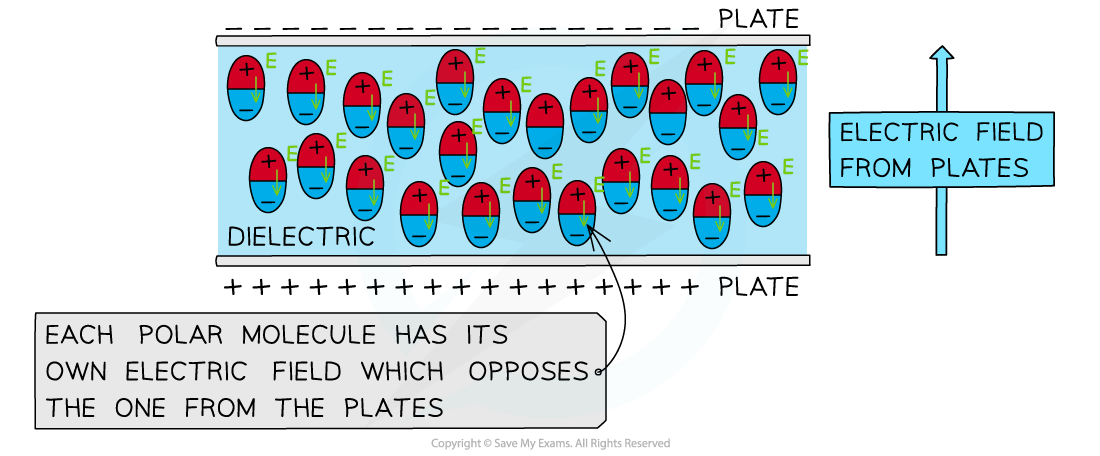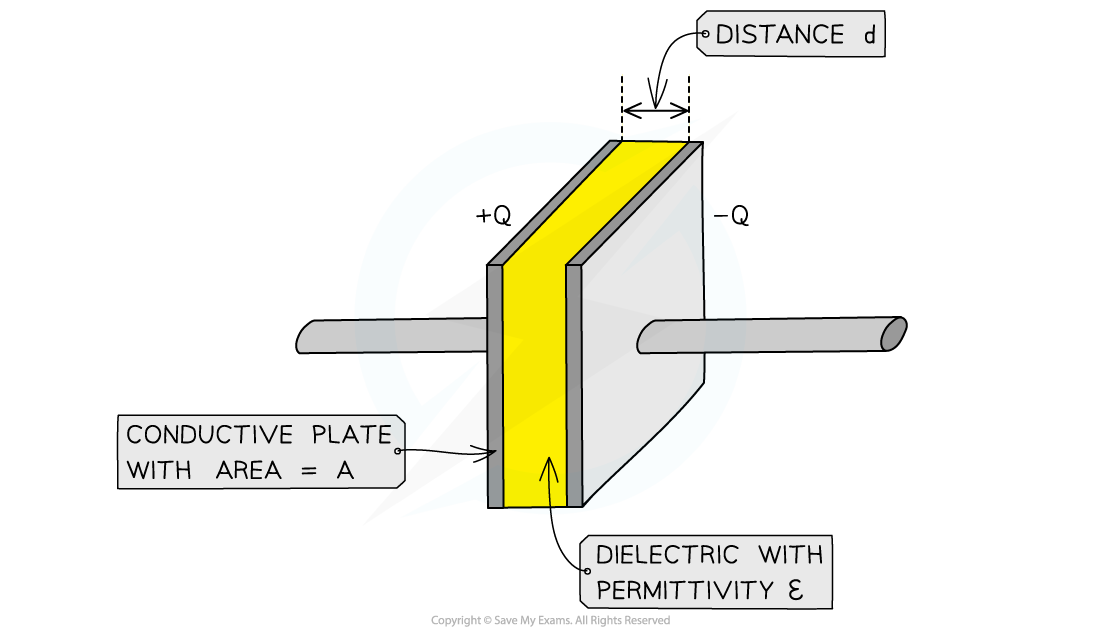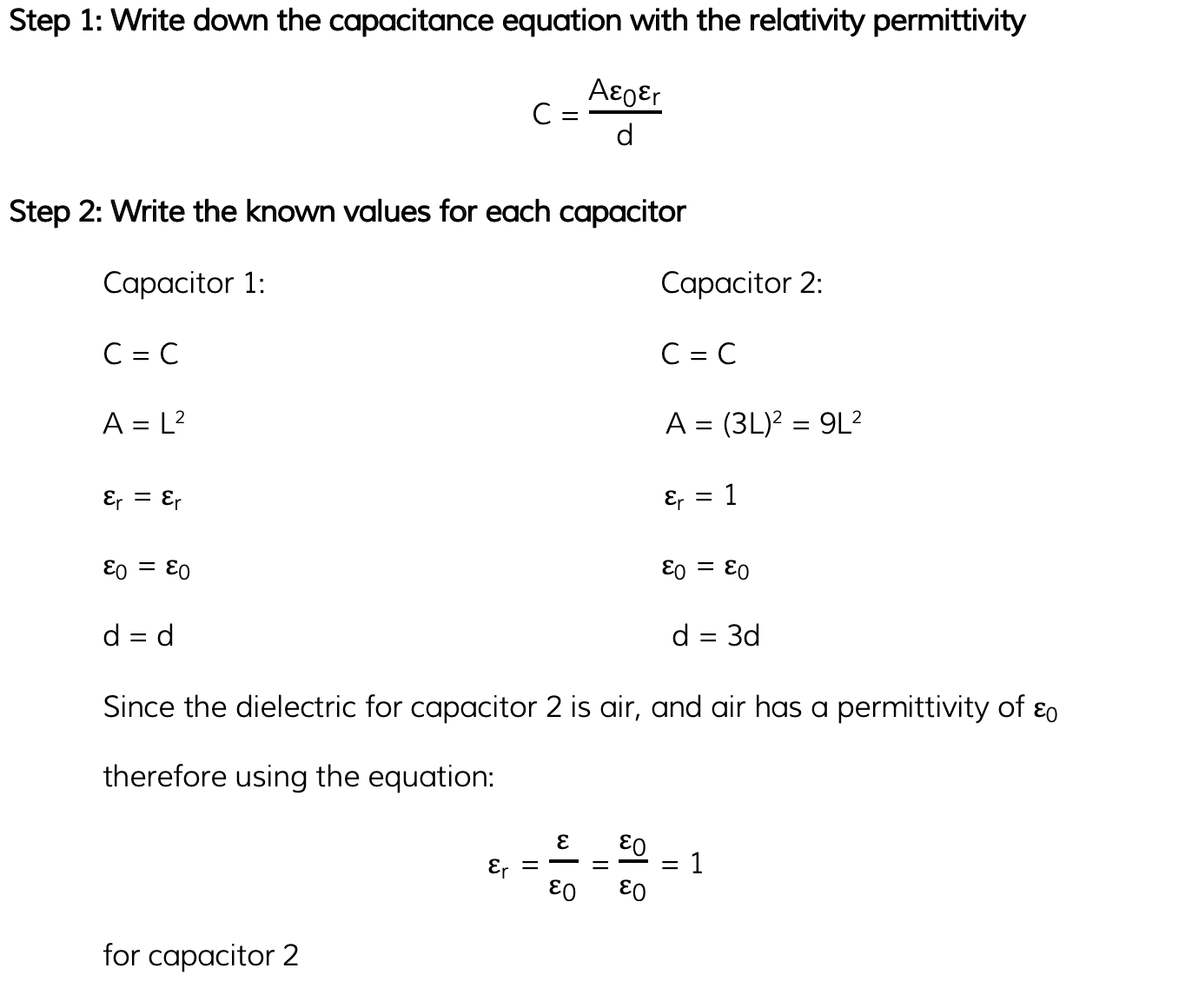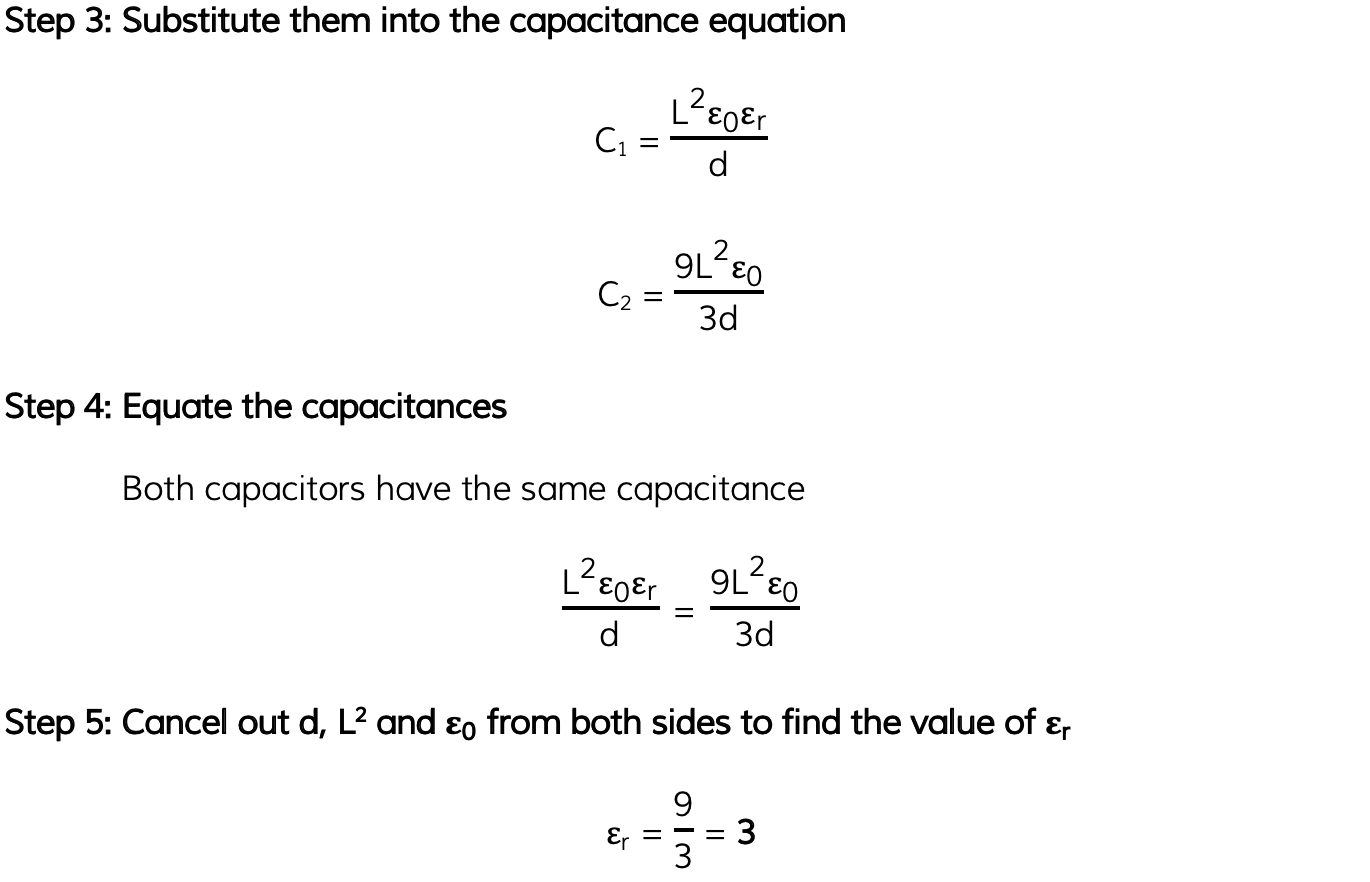Parallel Plate Capacitor (AQA A Level Physics) : Revision Note
Relative Permittivity & Dielectric Constant
Permittivity is the measure of how easy it is to generate an electric field in a certain material
The relativity permittivity εr is sometimes known as the dielectric constant
For a given material, it is defined as:
The ratio of the permittivity of a material to the permittivity of free space
This can be expressed as:

Where:
εr = relative permittivity
ε = permittivity of a material (F m-1)
ε0 = permittivity of free space (F m-1)
The relative permittivity has no units because it is a ratio of two values with the same unit
Worked Example
Calculate the permittivity of a material that has a relative permittivity of 4.5 × 1011.State an appropriate unit for your answer.
Step 1: Write down the relative permittivity equation

Step 2: Rearrange for permittivity of the material ε
ε = εrε0
Step 3: Substitute in the values
ε = (4.5 × 1011) × (8.85 × 10-12) = 3.9825 = 4 F m-1
Dielectric Action in a Capacitor
When the polar molecules in a dielectric align with the applied electric field from the plates, they each produce their own electric field
This electric field opposes the electric field from the plates

The electric field of the polar molecules opposes that of the electric field produced by the parallel plates
The larger the opposing electric field from the polar molecules in the dielectric, the larger the permittivity
In other words, the permittivity is how well the polar molecules in a dielectric align with an applied electric field
The opposing electric field reduces the overall electric field, which decreases the potential difference between the plates
Therefore, the capacitance of the plates increases
The capacitance of a capacitor can also be written in terms of the relative permittivity:

Where:
C = capacitance (F)
A = cross-sectional area of the plates (m2)
d = separation of the plates (m)
εr = relative permittivity of the dielectric between the plates
ε0 = permittivity of free space (F m-1)

A parallel plate capacitor consists of conductive plates each with area A, a distance d apart and a dielectric ε between them
Capacitor plates are general square, therefore if they have a length L on all sides then their cross-sectional area is L2
Worked Example
A parallel-plate capacitor has square plates of length L separated by distance d and is filled with a dielectric. A second capacitor has square plates of length 3L separated by distance 3d and has air as its dielectric. Both capacitors have the same capacitance.
Determine the relative permittivity of the dielectric in the first capacitor.
Answer:


Examiner Tips and Tricks
Remember that A, the cross-sectional area, is only for one of the parallel plates. Don't multiply this by 2 for both the plates for the capacitance equation!

You've read 0 of your 5 free revision notes this week
Sign up now. It’s free!
Did this page help you?
